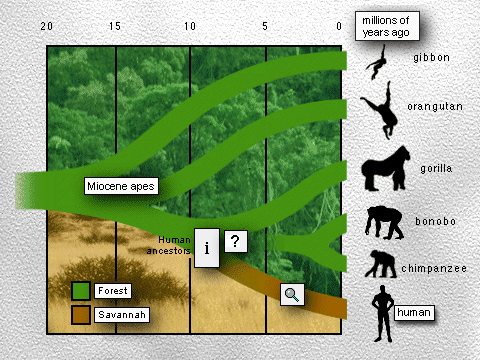Primates
This tutorial provides a framework for exploring and describing the diversity of living primates.
The framework consists of a brief introduction to Primate diversity, it is not intended to be a full information system about, or any kind of encyclopaedia of, living primates. Its intention is to provide first exposure undergraduates with a framework for developing a better understanding of the primates in biological terms.
You are expected to reflect on what you have learned from this tutorial, extend your studies by reading (see the bibliography and cited references) and answering any questions or tasks posed in the tutorial, and thereby develop a deeper understanding of primates, along the lines suggested by the tutorial's objectives.
Having completed this tutorial you should be able to:
Human Origins
This courseware tutorial introduces you to the subject of human origins. It is no more than an introduction.
You are expected to reflect on what you have learned from this tutorial,
extend your studies by reading (see the bibliography and cited references)
and answering any questions or tasks posed in the tutorial, and thereby develop
a deeper understanding of human origins, along the lines indicated in the
tutorial objectives.
